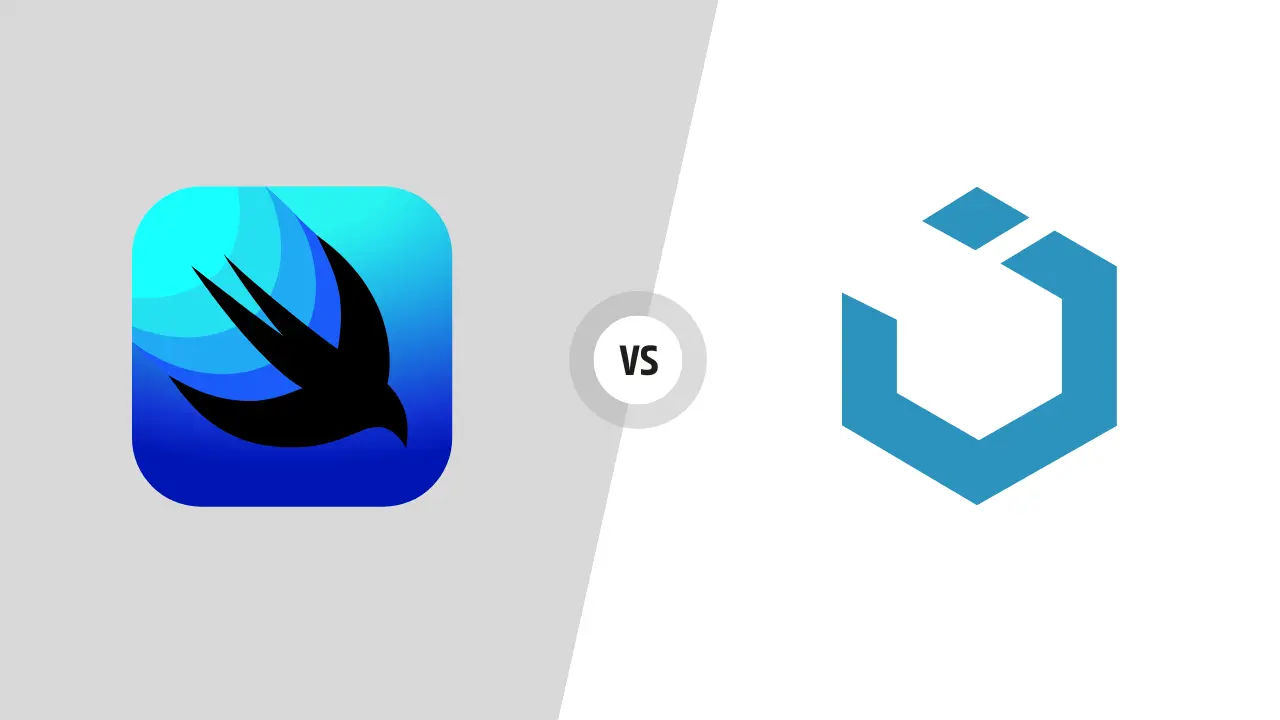With SwiftUI rapidly growing every year we are seeing a shift in UI development. For starters SwiftUI and UIKit are two different frameworks that allow you to create user interfaces for iOS apps the difference lies in the their approach. In this article we will compare SwiftUI with UIKit and understand their pros and cons to help you make a better decision for your next app.
What is SwiftUI?
SwiftUI is a declarative UI framework introduced by Apple in 2019. It’s a reactive way of building user interfaces with swift. It uses a simple and concise syntax to let you describe what your UI should look like and automatically updates the UI when the data changes. Some key features provided by SwiftUI which can aid in faster and easier development are
- Live Previews: With live previews you can see the UI update and show the result of your code change without having to run the app on a simulator or a device, saving you from those pesky build times.
- Cross-Platform development: By cross platform we don’t mean iOS and Android, we mean you can use the same code to create interfaces for iOS, iPadOS, macOS, watchOS and tvOS.
- Animation and transitions: We can easily add animations with minimal code using the built-in effects and modifiers.
- Accessibility: SwiftUI handles all the accessibility related features automatically whether its voice-overs or dark mode, based on your system settings.
What is UIKit?
UIKit is the OG framework introduced in 2007 by Apple. It is an object-oriented way of building UI’s with swift or objective-c. UIKit lets you create UI elements by using classes, properties, and events. Some of the key features that make UIKit really powerful are
- Interface Builder: We can use a drag and drop to design your UI using storyboards.
- Auto Layout: We can define constraints to define how your UI elements would adapt to different screen sizes.
- View controllers: We can use classes to control the behaviour of our UI elements using controllers like navigation controllers to control navigation, tab bar controller or tableview controller, etc…
- Customisation: The option to override a UIKIt class to modify the appearance and functionality of UI elements is always open.
Now that we know what SwiftUI and UIKit is let’s look at some of their advantages of the other.
Advantages of SwiftUI over UIKit
SwiftUI has some advantages over UIKit which makes it more appealing for iOS development.
- Learning Curve: SwiftUI has a very low bar when it comes to learning as compared to UIKit especially for beginners. The code is simpler and cleaner than UIKit with less number of concepts and API’s to learn.
- Reusability: SwiftUI enables us to create reusable views that can be put together to form more complex UI’s. Also we can run the same code on different platforms, reducing the time involved in development.
- Live Previews: As mentioned earlier we can see the changes in our UI live without even having to run the app which make for faster development.
- Less Bugs: Since SwiftUI follows are declarative syntax we are less prone to UI bugs. It reduces some of the most common problems with UIKit like forgetting to update IBOutlet or having to deal with some unsatisfiable layouts.
Drawbacks of SwiftUI over UIKit
With having advantages SwiftUI also has some drawbacks and challenges that we must consider before jumping into development.
- Support: SwiftUI requires that your apps minimum requirement is at the very least iOS 13. Which means you would need to drop the older users if you want to use SwiftUI. In contrast UIKit provides support from iOS 9.
- Maturity: Since SwiftUI is still in its early stages it has a few missing features. Where are UIKit is more mature and has a rich set of components and functionalities.
- Resources: SwiftUI does not enough resources and tutorials or a community behind it like UIKit. Which means we might have problems with SwiftUI when it comes to complex UI’s. In comparison UIKit has more than a decade of resources are available at your fingertips.
Final thoughts
In conclusion SwiftUI and UIKIt are both powerful frameworks used to create UI’s. However we must consider the different pros and cons before choosing one over the other. Swift UI is a modern framework that offers a declarative style of writing code and builds UI with less code. However, minimum requirements for SwiftUI is iOS 13 and higher. It’s still in its infant stages which is something to consider. UIKit is a more traditional UI development framework and relies on object-oriented building style. Which means more code but it has been around from more than a decade making it more verbose when compared to SwiftUI. Finally, the choice between SwiftUI and UIKit depends on your project requirements, target audience, personal preferences and skill level of the team. You could also use UIHostingController to embed SwiftUI code into UIKit view controllers or UIViewRepresentable to wrap UIKit in SwiftUI and that way you have the best of both worlds but something I don’t recommend you do unless you plan on migrating your existing app from UIKit to SwiftUI.



